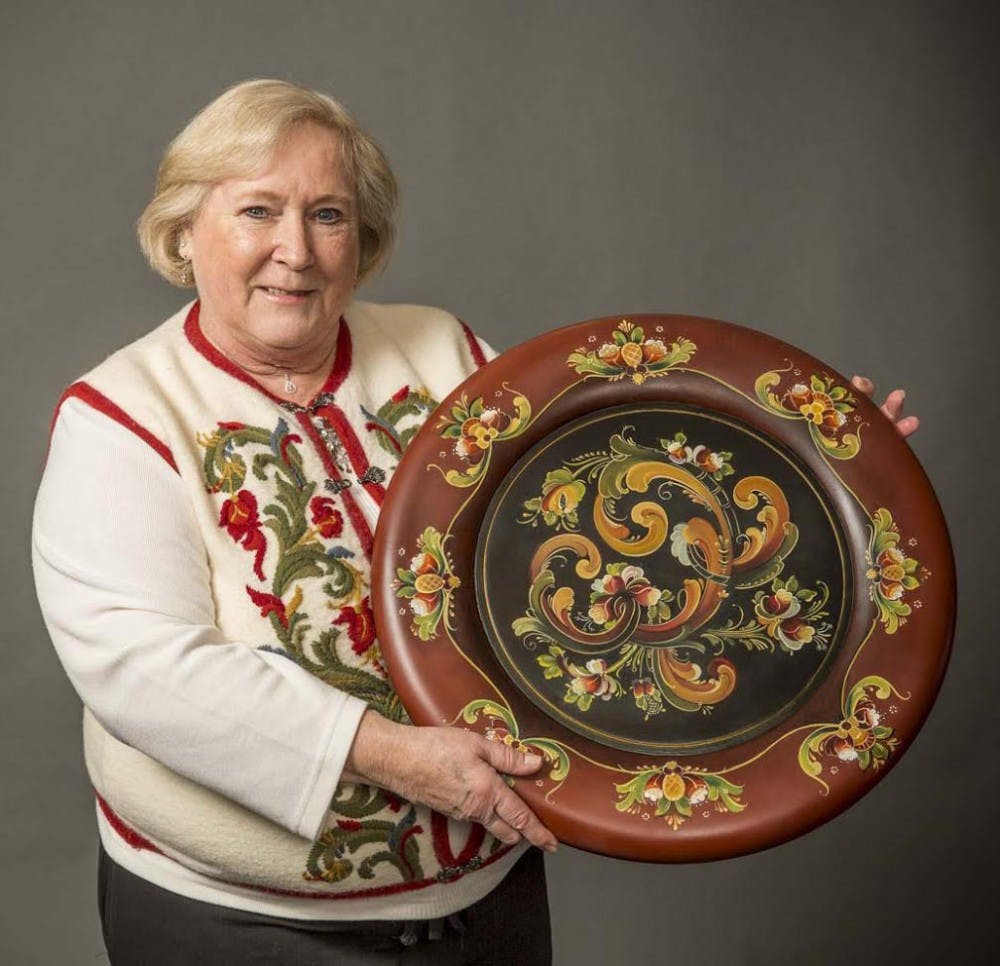The Mathers Museum of World Cultures has invited a collection of Indiana artisans to demonstrate and tell the stories behind their specific craft form throughout the semester.
The latest in this demonstration series, “The Beauty of Indiana Folk Arts,” will include Jan Boettcher sharing the rosemaling paint technique and Carol Powers sharing pysanky egg dying Thursday.
The program includes demonstrations at 10:30 a.m. and 2:30 p.m. and a narrative stage presentation at 11:45 a.m.
“I’m looking forward to sharing the love of the art and sharing what it’s all about,” Boettcher said. “It has a lot of history to it.”
Boettcher will be demonstrating a form of Norwegian painting called rosemaling. Jon Kay, director of traditional arts at the museum, said the art form is strongly connected to its history.
“It’s a very old art form that has been used traditionally to kind of decorate daily wear and daily items,” Kay said. “It’s become a strong identity marker for the Norwegian diaspora.”
Powers will be practicing pysanky, a Ukranian form of egg dying that utilizes a wax-resistant method to add layers of color to the eggs.
The process is started with the lightest colors, applying layers of wax where the artist wants to maintain the color below.
Each new layer of wax is covered in a darker dye, and can transition from the egg’s original coloring all the way down to black, Kay said.
“It goes back many generations in Ukraine and has taken on new meaning and new aesthetics in Indiana,” Kay said. “(Powers) just made a special one for the bicentennial, done in the Indiana blue. She’s been very much making this old tradition relevant to today’s life.”
These two artists represent a cultural background that stands out from the demonstrators who have presented at the museum before, Kay said.
“The reason they’re here together is we’re really looking at ethnic tradition,” Kay said. ‘We’ve looked at African American quilting, instrument making, now we’re really looking at European traditions that are reflecting cultural traditions that people continue even here in the U.S.”
The presentations will unify the style of the crafts with the meaning behind certain aesthetic decisions, Kay said.
“Both Carol and Jan represent true master artists within their respective traditions,” Kay said. “Students are going to be able to watch the creative process from start to finish — see how a plate gets finished and all the colors — and that behind the colors and the symbols are significant meaning.”
The opportunity to present alongside another artist with such a strong cultural tie is something Boettcher said she appreciates.
“I’m looking forward to being a part of this with the other artists — the whole experience is going to be very exciting,” Boettcher said.
Kay said by the end of the series, the museum will have introduced the work of 16 artists who represent the diversity of art in Indiana to audiences of students and community members.
“Often Indiana gets labeled as monocultural or without culture, and what we’ve tried to do with the Themester support is to paint a more diverse understanding of the state,” Kay said. “The students have really appreciated that and, now that we’re getting past the first eight weeks, really starting gain a fuller understanding of the greater landscape of the Hoosier state.”




